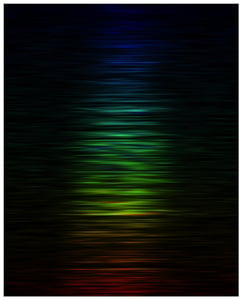 (CN) – A brief, powerful burst of radiation coming from billions of light-years away is helping scientists map the universe, while also adding to the mystery of these peculiar phenomena.
(CN) – A brief, powerful burst of radiation coming from billions of light-years away is helping scientists map the universe, while also adding to the mystery of these peculiar phenomena.
Known as fast radio bursts, these intense pulses of radio waves last only a few thousandths of a second, blazing with energy. No two bursts are alike, though only 18 have been detected so far – the first was discovered using the Parkes telescope in southern Australia in 2001.
In findings published Thursday in the journal Science, researchers examined the brightest burst yet, FRB 150807, which provides new insights into the cosmos.
"This FRB, like others detected, is thought to originate from outside of Earth's own Milky Way galaxy, which means their signal has traveled over many hundreds of millions of light-years, through a medium that – while invisible to our eyes – can be turbulent and affected by magnetic fields," co-lead author Ryan Shannon said.
Shannon said the vast spaces between objects in the universe are filled by a plasma of ionized particles and invisible gas that used to be nearly impossible to map – until FRB 150807 was discovered.
"This particular FRB is the first detected to date to contain detailed information about the cosmic web – regarded as the fabric of the universe – but it is also unique because its travel path can be reconstructed to a precise line of sight and back to an area of space about a billion light-years away that contains only a small number of possible home galaxies," he said.
Fast radio bursts are one of the most mysterious and energetic processes in the universe, and astronomers hope to learn more about these intense pulses of radio waves as new technology makes studying them and the cosmic details they illuminate easier.
"Ultimately, FRBs that can be traced to their cosmic host galaxies offer a unique way to probe intergalactic space that allow us to count the bulk of the electrons that inhabit our universe," said study co-author Matthew Bailes.
FRB 150807 was detected by the Parkes telescope in August 2015.
About the photo: The color shows the frequency of the waves, which is like the color of light. The brightness varies with frequency due to a process termed "scintillation," which is caused by the twinkling of the burst in the cosmic web. This scintillation is the fingerprint of turbulence in the cosmic web and tells us that web is very placid. (Credit: Dr. Vikram Ravi/Caltech and Dr. Ryan Shannon/ICRAR-Curtin/CSIRO)
Subscribe to Closing Arguments
Sign up for new weekly newsletter Closing Arguments to get the latest about ongoing trials, major litigation and hot cases and rulings in courthouses around the U.S. and the world.








